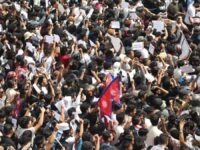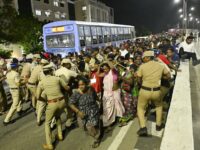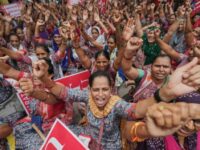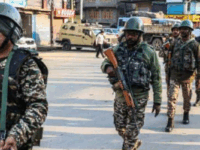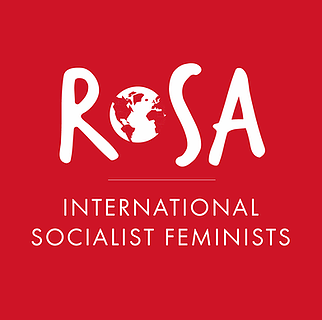Worst Floods in Pakistan’s History While Country is Virtually Bankrupt
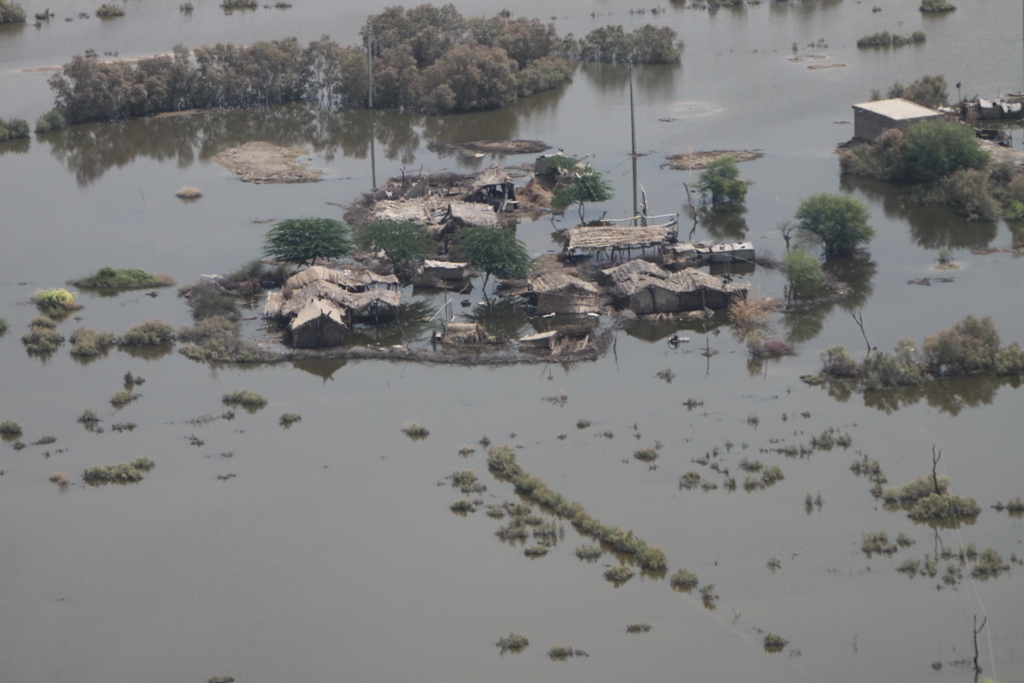
Pakistan’s poverty-stricken masses face many problems. Incomes are not able to keep up with rising prices, there are persistent shortages and at the end of August, inflation stood at 45%. Public infrastructure and social protection are almost non-existent. The country is as good as bankrupt with an unsustainable mountain of debt. If there are resources at all, they go to interest payments and to the army. On top of this come the terrible consequences of climate change. Extreme heat has been followed by floods that have already killed more than a thousand people. Climate activists say these are the “worst floods in Pakistan’s history.”
Climate Change
The flooding season began as early as July in Karachi and elsewhere. Monsoon rains in themselves are of course not exceptional, but the amount of rain this year is. The floods are exacerbated by the melting of glaciers from the long extreme heat wave earlier this year. In some places it reached 50 degrees Celsius. It got so hot that birds fell from the sky dead.
Pakistan is particularly vulnerable to the effects of climate change: An increase in the temperature of the sea and warmer air cause more rain to fall. Warmer air can store more water. Rain on parched ground is more likely to cause flooding.
Gilgit-Baltistan, Kashmir, and Khyber Pakhoonkhwa in the north as well as southern Punjab, Balochistan and Sindh provinces were hit by floods, affecting up to a third of Pakistan’s territory. The rainfall was the highest in over 30 years and three times the average. In the province of Sindh, it was almost eight times the average.
The damage is enormous. According to the Pakistani government, the damage amounts to more than 10 billion dollars. Thirty million people have been affected. There are more than 1,000 dead and more than 300,000 houses have been completely destroyed. About a million cattle died and infrastructure was also hit hard, with 3500 kilometres of roads destroyed. Climate change threatens the model of food production that was already under pressure. Crops providing for the livelihoods of millions have been devastated by the floods, also provoking new massive surges in already very high food prices.
Dependent on Credit
How will Pakistan finance its reconstruction? The country is virtually bankrupt and plagued by political crisis. There is an unstable government in which the two traditional parties, the Sharif family’s PML-N and the Bhutto family’s PPP, are represented, along with seven others. They came to power after the army ended the rule of Imran Khan and his PTI. Imran Khan felt strong enough to interfere with the composition of the army top. His removal once again made it clear who is really in charge in Pakistan. The army is an important economic and political force. Anyone who threatens the power of the army is immediately pushed aside.
The brutality with which the army pushed aside Imran Khan allowed the former cricket star to regain some of his lost popularity, as he could not do this with the anti-social policies and corruption he oversaw as head of government. He’s had to base himself on an even stronger dislike for the army and traditional parties. Despite the floods, Imran Khan continues to campaign for early elections, hoping to cash in on his regained popularity while he still can.
Pakistan is dependent on foreign credit. The IMF promised USD 4 billion in additional credit this year to prevent a Sri Lankan-style collapse. It hopes in this way not only to avoid bankruptcy but also to stop an even greater Chinese influence in Pakistan. China promised 10 billion dollars, mainly by extending existing loans. Saudi Arabia is lending $3 billion and postponing payments on oil deliveries. Other oil states also promised billions. This year, Pakistan will have to refinance nearly $21 billion in debt, to which will be added a budget deficit estimated at $9 billion this year.
The new loans come with conditions. To convince the IMF, the prices for energy and fuel were raised. A subsidy introduced earlier by Imran Khan to mitigate the high prices was abolished again by Prime Minister Shehbaz Sharif. The prices of fuel and diesel rose 66% and 92%, respectively, in one month. According to the IMF this is a good step, but for the Pakistani masses it is a social tragedy.
The IMF is demanding major cuts in spending to get the budget under control. These cuts are almost impossible without further protest, which is what the PTI is hoping to capitalise on. To block this, Imran Khan is being prosecuted and there was even a ban on showing his speeches on television. The Supreme Court withdrew that decision, but the repression is clearly being stepped up with a terrorism prosecution. Khan portrays the campaign against him as a conspiracy of US imperialism and claims that he was pushed aside by the army and the political establishment because he wanted better ties with China, while being critical of the US and India.
Political Crisis
With the PTI’s dominance in the provinces of Punjab and Khyber Pakhtoonkwa, the party could cause a lot of problems for the central government. The PTI has been holding large meetings across the country in recent months. In Punjab, the PML-N of Hamza Sharif (son of Shehbaz) hoped to oust the PTI from power by getting a number of PTI-representatives in the regional parliament to support a no-confidence motion against their own state premier. Early elections were held for the seats of those defectors, but they were convincingly won by the PTI that maintained its majority in Punjab.
If early national elections are held, a victory for Imran Khan is possible. However, the chances of early elections are limited. The traditional parties of PML-N and PPP have joined hands. They clearly enjoy the support of the army, which would not readily accept Khan’s return. The Pakistani army is unwilling to distance itself from the traditional international stance of the country, which has always tried to have a two-way street by maintaining ties with the US as well as China and Russia. The army does not want a break with US imperialism, even if Chinese influence in the country has increased significantly in recent years. On top of this, Imran Khan questioned the subservient position of politics vis-à-vis the army, whereas the real power in Pakistan lies with the army. Elections won by Khan would open the door for a coup, open or otherwise, by the army.
Organising for Social Change
The Pakistani masses are brutally confronted with the barbarism inherent in capitalism. There is no other way out than organising for socialist social change. This is an international struggle; climate change cannot be stopped in one part of the world alone. Poverty and shortages, but also corruption and greed of a small top layer, are also inherent in global capitalism.
The working class has the power to force change together with the poor peasants. This potential was confirmed in Pakistan’s traditions of struggle. In the mass protests of 1968 and the early 1970s, capitalism faltered. Years of military dictatorship, neo-liberal counter-reforms, the rise of terrorism and the consequent hardships have set back the organisations and consciousness of the working class and poor peasants. This must be rebuilt by creating and coordinating militant trade unions in the workplaces, bringing together radical youth, and formulating demands for the improvement of the terrible living and working conditions. This must be part of an international movement for socialist social change.

